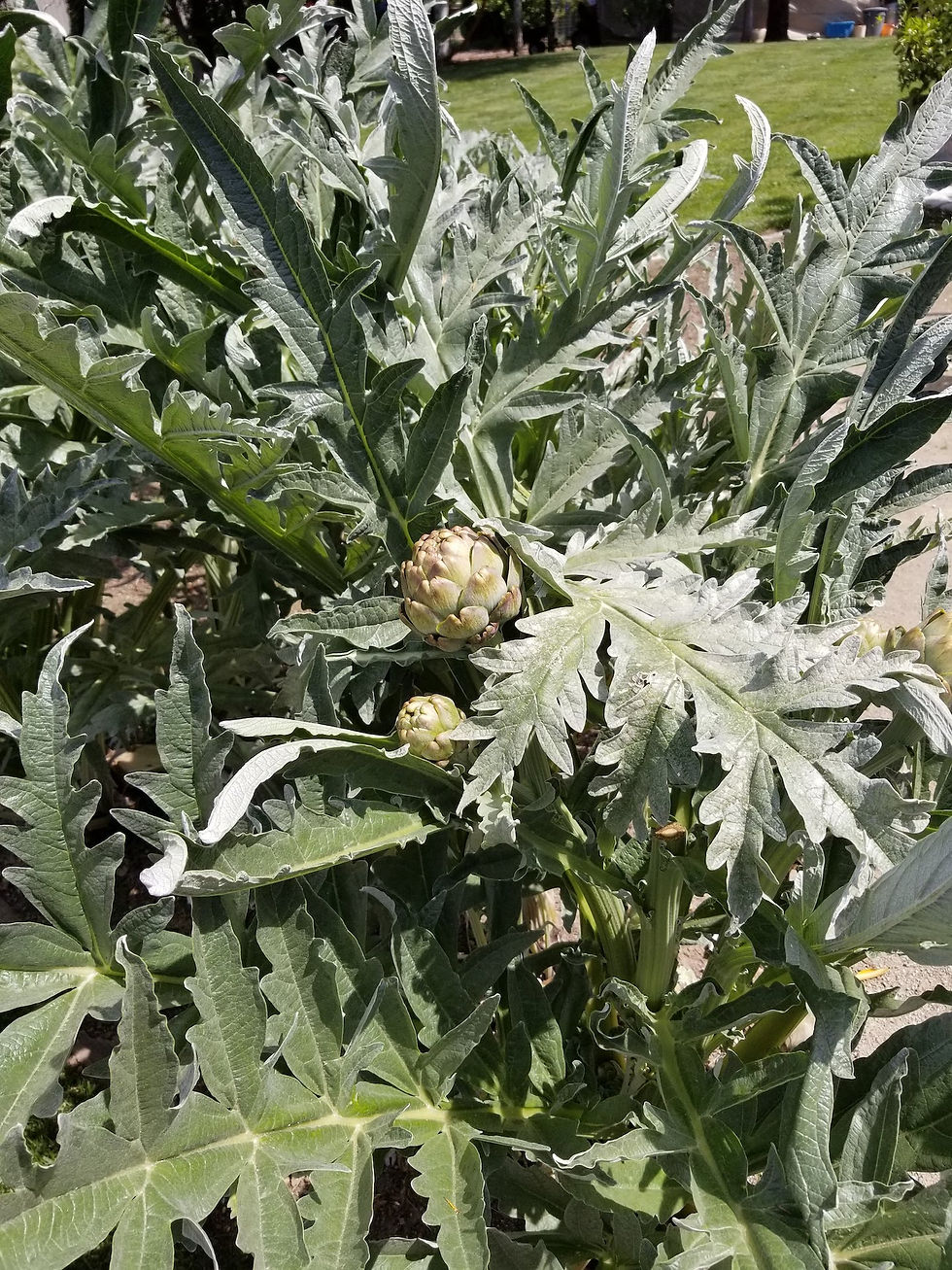From the Garden this Week…
- Cindi J. Martin

- Apr 30, 2020
- 4 min read
From the Garden this Week…
Snap Peas, Beets, Fava Beans, Lettuce Heads, Broccoli or Artichoke, Garlic Scapes, Chives, Swiss Chard, Fennel, Baby Carrots, Lemon Balm
Coming Soon… Summer Squash and Cucumbers
Using your Produce… by Julie Moreno
There are many new items for us this week, which makes for lots to talk about so let’s get started. We have the last of our winter fennel planting that needs to be harvested, so we will have one small head per basket. I included it in the recipe below. Allow is to mellow its flavor, by slowly sautéing at the beginning with the carrots and garlic scapes. Yes, garlic scapes are the flowering part of the garlic. By cutting the flower, the garlic will start finishing the bulb underground. The scapes should be cooked, or you can use them raw, in pesto, pickles or try making a garlic scape vinegar. I sometimes find them to be fibrous, so I recommend slicing them thinly if you are using them in a recipe. I saw a beautiful picture of a pizza recipe that had garlic scapes cooked whole on the pizza. It looked cool, but hard to eat. The young carrots don’t need to be peeled, just wash well before using.

Spring Fava Bean and Pasta Soup
1 tablespoon olive oil
4-5 garlic scapes sliced
2 carrots, diced
1 small fennel bulb, chopped
Salt and pepper
1-2 pounds fava beans shelled and skins removed
1 cup small cut pasta, like macaroni
3 cups water
1 teaspoon salt
Chives, sliced
Fresh mint, chopped
Shaved Parmesan cheese
In a large soup pot heat the oil over medium heat, add the oil, garlic scapes, carrots and fennel, season with salt and pepper. Cook and stir occasionally until the vegetables are soft, about 3-5 minutes. Add the fava beans, pasta, water and salt. Bring to a boil and then simmer for about 10-15 minutes, until the pasta is cooked. Add salt and pepper if needed. Serve with fresh herbs and shaved Parmesan cheese.
Artichokes…

This week we have a few artichokes coming and will have a few more for the next week or two. The easiest way to cook them is to boil them for 15-20 minutes. Until when you pull one of the outer leaves it comes off easily.
Serve the artichoke whole and let everyone pull off the leaves at the table. Then dip the bottom end of the leaf into your favorite dressing. Ranch or a vinaigrette are both good for dipping, but a little salt and pepper will work too.
Snap Peas…
We have snap peas coming this week. These are a fun addition to our spring vegetables, and they will only be around for a few weeks. They are tedious to pick and that usually makes for just a small amount per member. I add like to add them to a mix of vegetables, like this fried rice recipe. This is one of my easy go-to weekday dinners, that makes me look like a Chinese Chef.

Asian Fried Rice
2 cups raw rice, 4 cups cooked
3 eggs
3 tablespoons oil divided
½ cup diced onion or sliced garlic scapes
2-3 carrots, diced small
1 handful sugar snap peas, sliced
¾ cup cooked and chopped shrimp, chicken or pork (optional)
1-2 cups chopped greens
2 tablespoons soy sauce or tamari
Cook 2 cups of raw rice according to package directions. While the rice is cooking, scramble the eggs in a non-stick sauté pan with 1 tablespoon of oil. Remove the eggs from the pan and set aside. Prepare all of the vegetables and meat and wait until the rice is done cooking before proceeding. In a very large skillet or wok, heat the remaining 2 tablespoons of oil and sauté the onions and carrots, add the sugar snap peas, greens, cooked shrimp or chicken, cook for about 2-3 minutes until the meat is heated through. Add the cooked eggs, cooked rice and soy sauce. Stir thoroughly to combine and serve.
Metaphors of Soil and Soul…by Cindi J. Martin, LCSW

The Genesis account of the Creation of human beings tells us that God fashioned humans from the soil of the earth. For those who take the Bible seriously, we should not be surprised then, that there is a connection between well-being and spending time in nature. A study published in the Proceedings of the National Academy of Science found quantifiable evidence that walking in nature could lead to a lower risk of depression. Specifically, the study found that people who walked for 90 minutes in a natural area, as opposed to participants who walked in a high-traffic urban setting, showed decreased activity in a region of the brain associated with a key factor in depression. In the study, two groups of participants walked for 90 minutes, one in a grassland area scattered with oak trees and shrubs, the other along a traffic-heavy four-lane roadway. Before and after, the researchers measured heart and respiration rates, performed brain scans and had participants fill out questionnaires. The researchers found little difference in physiological conditions, but marked changes in the brain. Neural activity in the subgenual prefrontal cortex, a brain region active during rumination – repetitive thought focused on negative emotions – decreased among participants who walked in nature versus those who walked in an urban environment. What kind of “traffic” is going through your brain? If you find yourself consumed with negative thoughts and are feeling depressed or anxious, take time to walk and play where you can smell, see, hear, (even taste) and enjoy the healing power of your Creator’s nature.



Comments